The Big Bands on One Night Stand
Volume 2

 Twentieth century America enjoyed many trends in musical entertainment - vaudeville to operetta to musical theater, blues to rhythm and blues to rock and roll, fiddle tunes to backwoods bluegrass to country western, disco to hip-hop to rap - but the music of the big band era, encompassing musical compositions from many different sources, has proved to be one of our most memorable and enduring styles. Although the heyday of the big bands was relatively brief - roughly 1935 to 1946 - the sounds and music of this era remain a strong influence on popular music today.
Twentieth century America enjoyed many trends in musical entertainment - vaudeville to operetta to musical theater, blues to rhythm and blues to rock and roll, fiddle tunes to backwoods bluegrass to country western, disco to hip-hop to rap - but the music of the big band era, encompassing musical compositions from many different sources, has proved to be one of our most memorable and enduring styles. Although the heyday of the big bands was relatively brief - roughly 1935 to 1946 - the sounds and music of this era remain a strong influence on popular music today.
It's no coincidence that the rise of radio, recordings, and motion pictures corresponded with the rise of the big bands. All of these forms of entertainment and communication relied strongly on a constant influx of music to fill the airwaves, the juke boxes, and the movie screens of America - entertainment that a growing number of bands were more than happy to provide. In earlier years, when a band relied almost solely on a constant schedule of personal appearances to gain name recognition, radio and records allowed a band to perform in a single location and still be heard and enjoyed by many more people than could fit into even the largest theater or ballroom. When economic times were tough and there was little money to be spent on entertainment, a musical program or recording played on radio could still be enjoyed by those of even the most limited means. And during the war years, when there was a constant need for morale boosting both stateside and overseas, the big bands played literally thousands of war production plants, military installations, and GI-friendly nightspots to entertain both troops and civilians alike.
 From about 1943 on, the music of the big bands was also heard by soldiers, sailors, Marines, and Coast Guard personnel worldwide via the shortwave outlets of the Armed Forces Radio Service, which made it a practice to record the thousands of live remote broadcasts that aired nightly over all of the nationwide radio networks. Undergoing only nominal editing (usually to remove date-specific references), the AFRS pressed these broadcasts onto 16" vinyl records and distributed them throughout the world to be played and heard exclusively by military personnel. Since musical remotes were almost always aired live in the late night hours and seldom recorded for domestic rebroadcast, the efforts of the AFRS have left us with an impressive musical legacy: thousands of hours of musical entertainment featuring hundreds of orchestras performing at the top hotels, ballrooms, nightclubs, and theaters of the time.
From about 1943 on, the music of the big bands was also heard by soldiers, sailors, Marines, and Coast Guard personnel worldwide via the shortwave outlets of the Armed Forces Radio Service, which made it a practice to record the thousands of live remote broadcasts that aired nightly over all of the nationwide radio networks. Undergoing only nominal editing (usually to remove date-specific references), the AFRS pressed these broadcasts onto 16" vinyl records and distributed them throughout the world to be played and heard exclusively by military personnel. Since musical remotes were almost always aired live in the late night hours and seldom recorded for domestic rebroadcast, the efforts of the AFRS have left us with an impressive musical legacy: thousands of hours of musical entertainment featuring hundreds of orchestras performing at the top hotels, ballrooms, nightclubs, and theaters of the time.
One of the delights of hearing these live broadcasts today, in addition to the quality and variety of the music, is their sheer sense of immediacy. It's one thing to hear recordings made by the bands and orchestras of the 1940s and 1950s, but quite another to hear these same aggregations live and, essentially, in person. In much the same way that watching a televised stage play at home is far different that seeing that same play with an audience in a theater, it’s immediately apparent that the musicians gained considerable energy and enthusiasm when they were playing for an excited and responsive audience. Likewise, knowing full well that a sizable radio audience could lead to equally sizable record sales and increased attendance for in-person appearances, most bandleaders rehearsed their groups to be as polished, professional, and exciting as possible when on the air, resulting in bright performances often highlighted by distinctive solo work.
Of course, that same enthusiasm that could make a remote broadcast an exciting event could also lead to problems - particularly when one considers all that can possibly go wrong during any live performance. Soloists found their microphones had accidentally been turned off, leaving them struggling to be heard over a host of well-amplified sidemen; a gorgeous passage in an instrumental number might come across oddly unbalanced if the sound engineer wasn't informed of the need to emphasize the reeds over the brass in the mix; an announcer might trip over his tongue introducing a vocalist or, as is the case with one broadcast in this collection, lose his composure entirely and start laughing when an enthusiastic group of dancers good naturedly distracts him while he's on the air.
And, of course, there were times when even the largest nightclub audience chose to sit in their seats, sit on their hands, and offer only nominal applause after every number. It must have been extremely difficult on nights like these to build up pep, energy, and excitement for a vast radio audience when the people directly in front of the band refused to do anything more than smile and nod appreciatively -- but that's show biz, folks!
 Taken in total, however, and even with the occasional mistakes and mishaps, this collection of live broadcasts truly brings to life the sounds, the emotions, and the genuine thrills of the big band era. Listening to these rare recordings well over half a century after they were first heard is rather like stepping into a time machine. Close your eyes and it's easy to imagine dancing among the two or three thousand people at the vast Hollywood Palladium, sharing a drink with the sophisticates at the Chez Paree or the Copacabana, or dining under the elaborate glass and plaster ceiling in the Rose Room of the Palace Hotel in San Francisco. Likewise, hearing broadcasts from the legendary Cafe Rouge at the Hotel Pennsylvania (later the Hotel Statler), the New York nightspot where so many bands got their first nationwide exposure, makes one wish that that time machine really existed - if only to spend a few hours reveling in the music of an earlier time.
Taken in total, however, and even with the occasional mistakes and mishaps, this collection of live broadcasts truly brings to life the sounds, the emotions, and the genuine thrills of the big band era. Listening to these rare recordings well over half a century after they were first heard is rather like stepping into a time machine. Close your eyes and it's easy to imagine dancing among the two or three thousand people at the vast Hollywood Palladium, sharing a drink with the sophisticates at the Chez Paree or the Copacabana, or dining under the elaborate glass and plaster ceiling in the Rose Room of the Palace Hotel in San Francisco. Likewise, hearing broadcasts from the legendary Cafe Rouge at the Hotel Pennsylvania (later the Hotel Statler), the New York nightspot where so many bands got their first nationwide exposure, makes one wish that that time machine really existed - if only to spend a few hours reveling in the music of an earlier time.
This collection, the second in a series of collections taken from the Armed Forces Radio Service "One Night Stand" radio series, offers a diverse array of orchestras, heard in broadcasts dating from between 1944 and 1951. As with our earlier set, we offer twenty broadcasts featuring twenty different bands, in many cases performing at the height of their popularity. As you listen to these programs, you'll hear melodies both familiar and obscure , Hit Parade favorites as well as once-popular songs that have since faded from memory. You'll have the chance to hear the evolution of the big band sound - the introduction of string sections during the war years, the brief influx of be-bop that came in the late 1940s, and the reintroduction of the distinctive Glenn Miller clarinet/reed arrangements that came with the prosperity of the early 1950s. You'll hear the innovators - people like Shep Fields who, during the war years, abandoned his tick-tock "Rippling Rhythm" sound for a unique but short-lived band that featured only reeds, strings, woodwinds, and percussion, and Bobby Sherwood, whose abilities as both a musician and innovative arranger led him to experiment with new and different musical possibilities - as well as the showmen (Xavier Cugat, Blue Barron, Guy Lombardo) who found their own unique style and used it to entertain audiences and entice even the most reluctant dancers onto the floor. And, of course, there are the powerhouses of the big band scene - Harry James and his butter-smooth trumpet, Cab Calloway and his inimitable vocals, Woody Herman leading one of his many Herds, energetic drummer man Gene Krupa, talented saxophonist Charlie Barnet, handsome Glen Gray leading his Casa Loma Orchestra, and many others. Finally, there are also the bandleaders that have unfairly disappeared from our memories - people like Gay Claridge, who led a beautifully smooth sweet band so often featured at Chicago's Gay Paree nightclub, Del Courtney, who spent most of his career playing for dancing in San Francisco's most elegant hotels, and Art Wayner, who for many years conducted the orchestra for the "naughty but nice" revues at Lou Walters' Latin Quarter nightclub in New York City.
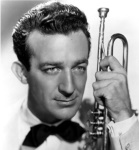 #314 Harry James and his Orchestra from Casino Gardens, Ocean Park, California
#314 Harry James and his Orchestra from Casino Gardens, Ocean Park, California
with vocals by Kitty Kallen and Buddy De Vito
Thursday, June 29. 1944 - 30:00 - AFRS
#366 Sonny Dunham and his Orchestra from the Hollywood Palladium, Hollywood, California
with vocals by Dick Dyer, Phyllis Lang, and Ruth McCullough
Tuesday, August 1, 1944 - 30:00 - AFRS
#337 Shep Fields and his Orchestra from the Copacabana, New York City
with vocals by Tommy Lucas and Meredith Blake
Wednesday, August 9, 1944 - 30:00 - AFRS
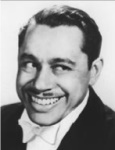 #604 Xavier Cugat and his Orchestra from the Trocadero, Hollywood, California
#604 Xavier Cugat and his Orchestra from the Trocadero, Hollywood, California
with vocals by Louis Del Campo and Elena Verdugo
Sunday, February 18 & Monday, February 19, 1945 - 30:00 - AFRS
#717 Cab Calloway and his Orchestra from the New Zanzibar Club, New York City
with vocals by Dolly Salter and Cab Calloway
July 1945 - 30:00 - AFRS
#711 Woody Herman and his Orchestra from the Cafe Rouge, Hotel Pennsylvania, New York City
with vocals by Frances Wayne and Woody Herman
Thursday, August 23, 1945 - 30:00 - AFRS
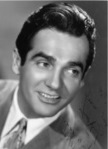 Fill #85 Gay Claridge and his Orchestra from the Chez Paree, Chicago, Illinois
Fill #85 Gay Claridge and his Orchestra from the Chez Paree, Chicago, Illinois
with vocals by Jack Milton and Gay Claridge
Monday, October 15, 1945 - 30:00 - AFRS
#736 Glen Gray and his Orchestra from Casino Gardens, Ocean Park, California
with vocals by Skip Nelson, Betty George, and Fats Daniels
Wednesday, October 24, 1945 - 30:00 - AFRS
#926 Gene Krupa and his Orchestra from the Meadowbrook Ballroom, Culver City, California
with vocals by Buddy Stewart and Carolyn Gray; Charlie Ventura on tenor sax
Sunday, March 31, 1946 - 30:00 - AFRS
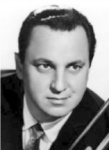 #1026 Buddy Morrow, his Trombone, and his Orchestra from Maria Kramer's Blue Room, Hotel Lincoln, New York City
#1026 Buddy Morrow, his Trombone, and his Orchestra from Maria Kramer's Blue Room, Hotel Lincoln, New York City
with vocals by Carl Denny, Helen Lee, and the Orchestra
Monday, May 27, 1946 - 30:00 - AFRS
#1006 Bobby Sherwood and his Orchestra from the Avedon Ballroom Cafe, Los Angeles, California
with vocals by Jay Johnson and Frances Glenn
Monday, June 3, 1946 - 30:00 - AFRS
#1124 Louis Prima and his Orchestra from the Casino Gardens Ballroom Cafe, Ocean Park, California
with vocals by Sandy Bishop, Louis Prima, and the Orchestra
Wednesday, July 3, 1946 - 30:00 - AFRS
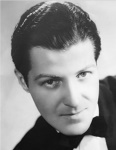 #1261 Charlie Barnet and his Orchestra from Tommy Dorsey's Casino Gardens, Ocean Park, California
#1261 Charlie Barnet and his Orchestra from Tommy Dorsey's Casino Gardens, Ocean Park, California
with vocals by Betty Perry, Alan Lane, and Art Robey
Friday, January 3, 1947 - 30:00 - ABC/AFRS
#1562 Del Courtney and his Orchestra from the Rose Room of the Palace Hotel, San Francisco, California
with vocals by Gloria Foster, Gil Vester, Jimmy Stewart, and Johnny Strong
Wednesday, January 7, 1948 - 30:00 - AFRS
#1952 Jimmy Dorsey, his Saxophone, and his Orchestra from the Cafe Rouge, Hotel Statler, New York City
with vocals by Claire Hogan, Larry Noble, and the Ensemble
Thursday, April 7, 1949 - 30:00 - AFRS
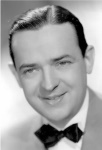 #2329 Ralph Flanagan and his Orchestra from the Cafe Rouge, Hotel Statler, New York City
#2329 Ralph Flanagan and his Orchestra from the Cafe Rouge, Hotel Statler, New York City
with vocals by Harry Prime
Tuesday, September 26, 1950 - 30:00 - AFRS
#2336 Guy Lombardo and his Royal Canadians from the Grill Room, Hotel Roosevelt, New York City
with vocals by Bill Flanagan, Cliff Grass, and Kenny Gardner
Wednesday, October 25, 1950 - 30:00 - AFRS
#2383 Ray Anthony and his Orchestra from the Cafe Rouge, Hotel Statler, New York City
with vocals by Betty Holiday, Ronnie Deauville, and The Skyliners
Tuesday, December 12, 1950 - 30:00 - AFRS
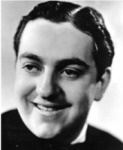 #2718 Art Wayner and his Orchestra from the Latin Quarter, New York City
#2718 Art Wayner and his Orchestra from the Latin Quarter, New York City
with vocals by Ginny Powell and Andy Pierce
Tuesday, July 31, 1951 - 30:00 - AFRS
#2714 Blue Barron and his Orchestra from the Hollywood Palladium, Hollywood, California
vocals by Betty Clark, Eddie Morgan, Dick Hall, and the Three Blue Notes
Tuesday, November 20, 1951 - 30:00 - AFRS